KCSE BIOLOGY 2014 QUESTIONS AND ANSWERS
KCSE PAST PAPER BIOLOGY 2014 QUESTIONS
Biology Paper 1 (231/1)
Answer all the questions.
1 State the importance of each of the following in living organisms:
(a) nutrition(1 mark)
(b) excretion.(1 mark)
2 (a) What is meant by the term seed dormancy?(1 mark)
(b) State three causes of seed dormancy.(3 marks)
3 State two functions of the placenta in mammals.(2 marks)
4 The diagram below illustrates a growing pollen tube.
(b) Explain the role of the pans labelled A .(2 marks)
5 The diagram below shows a set up for an experiment to demonstrate a certain physiological process.
(b) Explain the observation made on the set up after one hour. (2 marks)
6 State three roles of auxins in a plant stem. (3 marks)
7 A student drew a 6cm long diagram of a plant flower. If the actual length of the flower was 12 cm. calculate the magnification of the drawing made by the student. Show your working. (2 marks)
8 Differentiate between phenotype and genotype as used in genetics. (1 mark)
9 State two functions of intervertebral discs in the mammalian skeleton. (2 marks)
10 (a) Explain two roles of diffusion in human beings. (4 marks)
(b) What is meant by each of the following terms?
(i) Crenated cell. (1 mark)
(ii) Flaccid cell. (1 mark)
11 State three differences between tactic and tropic responses. (3 marks)
Tactic Responses Tropic Responses
(ii) E .......................................... .. (1 mark)
(b) State the observation made when the string is pulled downwards. (1 mark)
(c) Explain the observation in (b) above. (2 marks)
13 State one function of each of the following parts of a mammalian eye: (a) eye lashes (1 mark)
(b) lachrymal glands. (1 mark)
14 State three structural differences between DNA and RNA. (3 marks)
(b) Distinguish between a tendon and a ligament. (1 mark)
16 The diagram below illustrates a nerve cell.
(b)Give a reason for your answer in (a) above(1 mark)
(c)Identify the pan labelled J(1 mark)
State one function of each of the parts labelled G and H.
(i) G................. .. (1 mark)
(ii) H -------------------- (1 mark)
17 Give a reason why the image is not formed when light is focused on the blind spot.
18 Explain why
(a) mammalian testes are located to hang outside the body (2 marks)
(b) four months after fertilization, ovaries can be removed from a human female, without terminating pregnancy.
(2 marks)
19 Why is a burning charcoal stove in a poorly ventilated room likely to cause death of the inhabitants?(3 marks)
20 State one function of each of the following cell organelles:
(a)golgi bodies(3 marks)
(b)lysosomes.(1 mark)
21 Name the type of skeleton that makes up each of the following animals:
(a)locust(1 mark)
(b)bird.(1 mark)
22 (a) Name two vestigial structures in human beings.(2 marks)
(b) Why are some bacteria able to resist the effect of antibiotics?(2 marks)
substances in the plant.
(a) Name the substances transported along the paths labelled K and L.
K ...............................
L....................................
(2 marks)
(b) Give a reason for your answer in L above.(2 marks)
23 Below is an illustration of a cross section of a plant root showing the transportation of Substance in the plant
Name the substances transported along the paths labeled K and L by
K .......................................... ..(1 mark)
L .............................................. ..(1 mark)
(b) Give the reason for your answer in L above (1 mark)
24 The table provided shows the transportation of substances in the human body.
Name the substances represented by
M N P
25 State two roles of luteinising hormone in human reproduction.(2 marks)
26.The table below shows the concentration of sodium and iodine in sea water and cell sap of a plant
(a) (i) Name the process through which the plant cells take up sodium ions.(1 mark)
(ii) Give a reason for your answer in (a) (i) above.(1 mark)
(b) If the plant was sprayed with a chemical that inhibits respiration:
(i) which of the two ions uptake will be affected?(1 mark)
(ii) give a reason for your answer in (b) (i) above.(1 mark)
27 The diagram below shows the gaseous exchange system of a locust. Muscle tissue
(b) State the function of the part labelled R. (1 mark)
(c) How is the part labelled S structurally adapted to its function? (2 marks)
Biology Paper 2 (231/2)
SECTION A (40 marks)
Answer all the questions in this section in the spaces provided.
1 (a)State four characteristics of fruits dispersed by animals. (4 marks)
(b)State two roles of each of the following hormones in menstruation:
(i) luteinising hormone; (2 marks)
(ii) oestrogen. (2 marks)
2 The diagram below illustrates the role played by red blood cells in the transportation of carbon (IV) oxide.
(a)Other than the carbon (IV) oxide transportation in the red blood cells, name the other form of carbon (IV) oxide transportation in humans. (1 mark)
(b)(i) Name substance F ................................... .. (1 mark)
(ii) Name the enzyme marked G and state its role in the reaction. (2 marks)
Enzyme ......................... ..
Role.......
(c)Explain Why transportation of carbon (IV) oxide in red blood cells is advantageous. (2 marks)
(d)Explain the role of calcium ions in blood clotting. (2 marks)
3 (a)Describe the mechanism of gaseous exchange in plants through the lenticels. (3 marks)
Explain each of the following:
(b) (i) the tracheoles lack spiral bands of chitin; (3 marks)
(ii) the floor of the mouth is lowered during inhalation in a bony fish. (2 marks)
4 (a) How is sex determined in man? (4 marks)
(b) (i) Differentiate between sickle cell anaemia and sickle cell trait. (2 marks)
(ii) Explain why people with sickle cell trait have an adaptive survival advantage over normal individuals in malaria endemic regions. (2 marks)
5 The diagram below represents the transverse section of the spinal cord.
(b) State two functions of the fluid found in the part labelled J. (2 marks)
(c) Give a reason for the colour of white matter. (1 mark)
(d) Name and give the function of the enzyme found at the part labelled K.
Name ........................................... .. (1 mark)
Function ..........................................(2 marks)
(e) On the diagram, use an arrow to show the direction of impulse transmission along the neurone labelled 1. (1 mark)
SECTION B (40 marks)
Answer question 6 (compulsory) and either question 7 or 8 in the spaces provided after question 8.
6 An experiment was done to determine the uptake of nitrogen from the soil by broad bean seedlings. The experiment was done with one set of seedlings M grown in the atmosphere enriched with carbon (IV) oxide and another set up of seedlings N grown in the normal atmosphere.
The amount of nitrogen in each seedling was measured in milligrams at intervals often days.
The table below shows the results obtained.
(a) Using the same axis draw line graphs of nitrogen uptake by the two (M and N) sets of broad bean seedlings against time. (8 marks)
(b) Determine the rate of uptake of nitrogen in Set Mbetween 65 and 85 days. (2 marks)
(c) (i)What is the relationship between carbon (IV) oxide concentration in the air and nitrogen uptake? (1 mark)
(ii) Account for the relationship in (c)(i) above. (3 marks)
(d) (i) What would happen to the concentration of nitrogen in the seedlings in set M, if after 75 days the seedlings are transferred to a normal atmosphere. (1 mark)
(ii) Explain your answer in (d)(i) above. (2 marks)
(e) State three ways in which nitrogen fixation occurs. (3 marks)
8 (a) Explain how each of the following factors affects the rate of photosynthesis:
(i) temperature; (2 marks)
(ii) chlorophyll concentration. (2 marks)
(b) Describe the process of carbohydrate digestion in human beings. (16 marks)
9 (a) How does excretion take place in plants? (4 marks)
(16 marks) (b) Describe the role of the human skin in homeostasis.
3.4.3 Biology Paper 3 (231/3)
1 (a) You are provided with solutions labelled Q and R, a substance labelled D and a delivery tube fitted with a rubber bung/cork.
I Label solution Q as lime water.
ll Label solution R as 10% sugar solution.
III Add substance D to the 10% sugar solution.
IV Tightly close/plug the boiling tube with the rubber bung/cork fitted with a delivery tube.
V Dip the other end of the delivery tube in the test tube containing lime Water.
VI Put the boiling tube in the warm water bath at 40°C and allow the set up to stand as shown in the diagram below.
VII Observe the set up for about l5 minutes.
(ii) Explain the observations made in the lime Water. (2 marks)
(iii) Name the physiological process that was being investigated. (1 mark)
(iv) Write a word equation for the physiological process investigated. (1 mark)
(v) Why was the Warm water bath used in the experiment? (2 marks)
(b) Put a drop of the contents in the boiling tube on a microscope slide. Stain with a drop of methylene blue and cover with a cover slip.
Observe it under a light microscope using low, medium and high power objective lenses.
(i) Draw and label one of the structures observed under the high power objective lens. (3 marks)
(ii) State the magnification of your drawing. (1 mark)
(iii) State the identity of substance D.
2 You are provided with specimens labelled E and F.
(a) (i) Name the sub-division to which the specimens belong. (1 mark)
(ii) Using observable features on the specimens, give two reasons for your answer in (a)(i) above. (2 marks)
(b) State the differences between the
(i) Leaves of specimens E and F. (5 marks)
LEAF E
LEAF F
(ii) Stems of specimens E and F. (2 marks)
STEM E
STEM F
(c) Using observable features on the specimen, state the adaptation of the stem of specimen E to its habitat. (4 marks)
3 The photograph below shows two (A and B) skeletal limbs of a certain mammal.
(ii) State two features observable on the skeleton to confirm your answer in (a)(i) above. (2 marks)
(b) Name the bones labelled J, K and M.
K .................................... ..(1 mark)
M ................................ ..(1 mark)
(c) Which bone forms the second joint with the bone labelled K?(1 mark)
(d) Name the type of joint formed at the part labelled H and L.(1 mark)
L .............................. H........................ ..(1 mark)
(e) Apart from the bones, state the function of any two other components of a joint.
Component
Function
(4 marks)
KCSE PAST PAPER BIOLOGY 2014 MARKING SCHEME
Biology Paper 1 (231/ 1)
1. (a) Acquisition and utilization of nutrients; (1 mark)
(b) Elimination of metabolic wastes to prevent accumulation to toxic level; (1 mark)
2. (a) A period of rest in which a seed performs its physiological processes slowly and utilizes little food; (1 mark)
(b) - Chemical/growth inhibitors;
- Hard/impermeable seed coat;
- Low / freezing temperatures;
- Under developed embryo/immature embryo;
- Low concentration of hormones;
- Lack of appropriate light wavelength;
(max 3 marks)
3. - Exchange of nutrients /metabolic wastes/ gases between the mother and foetal circulatory systems;
- Secretion of progesterone hormone;
(2 marks)
4. (a) Tube nucleus;
(b) - One male nucleus fuses with the egg cell nucleus to form a zygote;
- The other male nucleus fuses with the polar nuclei to form the endosperm;
(2 marks)
5. (a) Hypertonic solution; (1 mark)
(b) Volume of sugar solution increases in the thistle funnel While that of distilled water in the beaker reduces; because the thistle funnel gains distilled water by osmosis.
(2 marks)
6. - Cell division;
- Cell elongation;
- Development of adventitious roots;
- Formation of callus tissue;
- Causes apical dominance;
- Causes tropic responses.
3 x 1 (3 marks)
7. Object length = 12 cm
Drawing length = 6 cm
M _ Drawing length _ _i_
g — Object length ’ — 12 ’
= X 0.5;
(2 marks)
8. - Phenotype is the outward appearance of an organism while Genotype is the genetic make up of an organism; (1 mark)
9. - Act as shock absorbers;
- Allow smooth movement between the vertebrae/reduce friction; (2 marks)
10. (a) - Absorption of materials e.g. diffusion of digested food into the blood stream;
- Gaseous exchange e.g. CO2/O2 diffuses from capillaries into the alveoli.
- Excretion of nitrogenous Wastes; e.g urea diffuses from blood capillaries into the elimination sites. (max 4 marks)
(b) (i) Crenated cell is a shrunk animal cell that has lost water by osmosis; (1 mark)
(ii) Flaccid cell is a flabby /shrunk plant cell that has lost waster by osmosis; (1 mark)
11. Tactic Responses Tropic Response
- Are locomotory - Are growth responses;
- Are fast - Are slow;
- Not influenced by growth hormones - Are caused by growth hormones;
- Temporary - Permanent;
(3 marks)
12. (a) (i) Rib-cage/chest cavity; ( 1 mark)
(ii) Diaphragm; (1 mark)
(b) The balloons are inflated; (1 mark)
(c) Pulling down the string increases the volume of D, hence decreasing the pressure inside;
The low pressure causes external atmospheric air to rush in and inflate the balloons; (2 marks)
13. (a) Trap foreign particles entering the eye;
Produce fluid/tears; (1 mark)
(b) - Moistens the comea;
- Wash foreign materials out of the eye;
- Antiseptic / kills harmful microorganisms; ' ' ' ‘
14. DNA RNA
Double stranded/double relix Single stranded;
Has Thymine Thymine is replaced by uracil/reject Thiamin;
Has the four nitrogen base pairing pattern Lack the four nitrogen base pairing pattern;
Deoxyribose sugar Ribose sugar;
(3 marks)
15. (a) Skeletal muscles / striated muscles; (1 mark)
(b) Tendon is a (inelastic) tissue that attaches muscles to bones while Ligament is a (inelastic) tissue that attaches a bone to another bone of a movable joint;
(1 mark)
16. (a) Sensory neurone; (1 mark)
(b) Cell body is located off the axon/tied outside the CNS; (1 mark)
(c) Schwann cell; (1 mark)
(d) (i) Receipt/transmits impulses to neighbouring neurons in the CNS from sense organs; (1 mark)
(ii) Insulates the axon/accept dendron for axon; (1 mark)
17. The blind spot lacks both cones and rods hence images are not perceived; (1 mark)
Accept photoreceptor cells for cones and rods;
18. (a) To provide a cool environment; that is conducive for sperm formation; (2 marks)
(b) Progesterone hormone; is secreted by the placenta to maintain the pregnancy; (2 marks)
19. Due to limited oxygen, haemoglobin combines With carbon (II) oxide to form carboxyhaemoglobin;
Carboxyhaemoglobin does not readily dissociate hence reduces the capacity of haemoglobin to transport oxygen; Carbon (II) oxide is therefore a respiratory poison if breathed in for a long time;
(3 marks)
20. (a) Packaging of substances/glycoproteins/ transportation of glycoproteins; Secretion of synthesized proteins and carbohydrates;
Formation of lysosomes/modification of carbohydrates to form glycoproteins; (1 mark)
(b) - Digestion of food/Breakdown large molecules;
- Destroy Worn out organelles or cells/tissue;
(max 1 mark)
21. (a) Exoskeleton;
(b) Endoskeleton; ( 1 mark)
22. (a) Appendix/accept nictating membrane; coecum and ear drum;
Tail/coccyx; ( 1 mark)
(b) They have a gene for resistance/acquire it through mutation;
The gene for resistance is passed to offsprings establishing a population of resistant forms;
(2 marks)
23. (a) K - Photosynthetic products/manufactured foods example vitamins/alicose/proteins/ sucrose/maltose/fructose/lipids/nitrates; ( 1 mark)
L - Water and mineral salts; (1 mark)
(b) The substances are moved into the star shaped xylem; (1 mark)
24. M - lungs; (1 mark)
N - Urea,ammonia,; (1 mark)
P - Digested food,Water; mineral ions; (1 mark)
25. - Stimulates maturation of the Graafian follicle/stimulates ovulation;
- Stimulates corpus luteum to secrete progesterone hormone;
- Stimulates release of androgens;
- Stimulates development of corpus luteum;
(2 marks)
26. (a) (i) Diffusion; ( 1 mark)
(ii) Sea water contains a higher concentration of sodium ions than the cell sap; (1 mark)
(b) (i) Iodide ions; (1 mark)
(ii) Sea water has a lower concentration of iodide ions than the cell.
The plant requires energy to take up the iodide ions (by active transport); (1 mark)
27. (a) Spiracle; ( mark)
(b) Keep the trachea open for air passage; ( mark)
(c) - Lacks spiral bands of chitin / to make it thin; for diffusion of gases
- Moist; to dissolve respiratory gases;
(2 marks)
4.4.2 Biology Paper 2 (231/2)
SECTION A (40 marks)
1. (a) ' Fruit fleshy/juicy/succulent;
(b) (i) Luteinising hormone:-
stimulates ovulation;
stimulates the development of remains of the graafian follicle into corpus luteum;
stimulate corpus luteum to produce progesterone; (max 2 marks)
(ii) Oestrogen:-
stimulates healing and repair of uterine lining /endometrium following menstruation;
stimulates pituitary gland to secrete luteinising hormone; (2 marks)
2. (a) Carbonic acid/carbaminohaemoglobin/hydrogen carbonate;
(1 mark)
(b) (i) Water;
(ii) Carbonic acid; (1 marks)
Role: catalyses reaction between carbon IV oxide and water to form (weak) carbonic acid; (2 marks)
(c) Prevents accumulation of acidity/maintains pH of blood since hydrogen ions combine with haemoglobim to form Haemoglobinc acids;
Faster; due to the catalytic effect of carbonic anhydrase;
(max 2 marks)
(d) Activates thromboplastin; thrombokinase to neutralize heparin/convert prothrombin to thrombin;
(2 marks)
3. (a) O2 concentration is higher outside than inside the lenticels; O2 diffuses into lenticels;
then into the cells;
CO2 concentration is higher inside the lenticels than on the outside CO2 diffuses out of the lenticels into the atmosphere; (4 marks)
(b) (i) To provide a large surface areal make them thin; for gaseous exchange/ to reduce diffussion distance for respiratory gases;
(ii) This increases the volume of the buccal cavity while decreasing the pressure; which forces water to rush into the mouth;
(2 marks)
4. (a) Males have two dissimilar chromosomes X and Y/heterogametic;
Females have two similar chromosomes X and X/homogametic;
Male gamete/sperms have either X or Y chromosome, while all ova have X chromosome;
If a sperm with X fuses with an ovum a female is formed and if a sperm with Y fuses with an ovum a make is formed;
(4 mark)
(b) (i) Sickle-cell trait is heterozygous while sickle cell anaemia is a homozygous condition;
(2 marks)
(ii) People with sickle cell trait are resistant to malaria; because the plasmodium cannot survive in sickle shaped red blood cells.
(2 marks)
5. (a)H - cell body; (1 mark)
(b) — Has nutrients for nourishment of neurons, brain, spinal cord;
— Acts as a shock absorber for protection of spinal cord from mechanical damage; (2 mark)
(c) Contains myelin sheaths (of neurons which are made up of fats that make it have a shiny white appearance); (1 mark)
(d) Cholinesterase; (1 mark)
Breaks down Acetylcholine; to acetic acid and choline;
(2 marks)
(e) Correct arrow on neurone 1 points towards the grey matter; (1 mark)
SECTION B (40 marks)
6. (a) Scale Zx1 mark
Identity of axes Zx1 mark
Plotting of points Zx1 mark
Labelling of curves 1 mark (% >< 2)
Smooth curves 1 mark (% >< 2)
(c) (i) The higher the carbon (IV) oxide content in air, the higher the nitrogen uptake and vice versa; (1 mark)
(ii) More Carbon (IV) oxide in the air makes the seedlings to photosynthesize more; hence more amino acids/protein; are formed in the dark stage;
formation of amino acids/protein requires nitrogen;
(max 3 marks)
(d) (i) The concentration of nitrogen would remain constant; (1mark)
(ii) Despite decline in CO2; the nitrogen already absorbed/taken up by the plant Will still remain; (3 marks)
(iii) Lightning;
By free-living bacteria/micro organisms;
By Rhizobium (in root nodules of legumes);
(3 marks)
7. (a) (i) Reactions in photosynthesis are catalysed by enzymes; at optimum temperature photosynthesis proceeds faster;
Below optimum temperature the rate of photosynthesis decreases because enzymes are inactivated by the low temperatures / above optimum the rate of photosynthesis decreases because enzymes are denatured;
(2 marks)
(ii) Chlorophyll traps energy from sunlight for photosynthesis;
The higher the chlorophyll concentration the higher the rate of photosynthesis and vice versa;
(2 marks)
(b) In the mouth;
Food is chewed; to increase surface area for enzyme activity/saliva contains salivary amylase;
Saliva mixes with food and provides an alkaline medium; for amylase enzymes;
Salivary amylase acts on starch and converts them to maltose;
In duodenum;
Food is mixed with bile; and pancreatic juice;
Bile provides alkaline medium; for activity of duodenal enzymes; and neutralizes acidic chyme from the stomach;
Pancreatic juice contains pancreatic amylase; which converts starch to maltose;
In the Ileum;
Epithelial cells in Ileum secrete succus entericus; which contains enzymes;
sucrase; which acts on sucrose and converts it to fructose and glucose;
Lactase; which acts on lactose and converts it to galactose and glucose;
Maltase; acts on maltose and converts it to glucose;
max 16 marks
8 a ' Diffusion of Carbon (IV) Oxide; and oxygen; through stomata and lenticels;
Some wastes are stored in tissues in non-toxic form e.g. calcium oxalate;
Some of these tissues or organs drop off from plants e.g. leaves, flowers, fruits and bark of caffeine, nicotine, quinine;
Some wastes are released by transpiration through stomata and lenticels such as water vapour;
Others are released by guttation through hydathodes as water;
Others are released by exudation. (max 4 marks)
When body temperature is lowered below normal;
arterioles in the skin constrict;
blood is diverted to a shunt system;
less blood flows to the skin/less heat is lost;
when body temperature is raised above normal;
arterioles in the skin dilate;
more blood flows to the skin;
more heat is lost by convection and radiation;
when body temperature is lowered below normal:
erector-pilli muscles contract, hair stands erect;
more air is trapped, air is a bad conductor;
and insulates the body against heat loss;
when body temperature is raised above normal:
erector-pilli muscles relax, hair lies on skin;
less air is trapped, more heat is lost;
when body temperature is lowered below normal:
less fluids are absorbed by sweat glands;
less sweating, less vaporisation of water;
when body temperature is raised above normal:
sweat glands are more stimulated and more sweat is produced;
water in sweat evaporates and takes up heat from the body;
body is cooled/body temperature is lowered;
(max 20)
4.4.3 Biology Paper 3 (231/3)
1. (a) (i) Bubbles / gas formed/effervescence/foam/frith;
lime water turns white/white ppt/milky/cloudy;
(2 marks)
(ii) Gas produced is carbon (IV) Oxide/C02/carbon dioxide;
which reacts with lime water to form a white precipitate/calcium carbonate/ insoluble sent;
(2 marks)
(iii) Respiration / anaerobic respiration / fermentation/ aerobic respiration; (1 mark)
(iv) Respiration
(v) To provide optimum temperatures; for enzymes activity/action/working/ reaction;(i)
(ii) X400; (eye piece lens x high objective lens) (1 mark)(iii) Yeast; (1 mark)
2. (a) (i) Angiospermatophyta/Angiospermae; (1 mark)
(ii) E - veins on leaves / flowers / seeds;
F - narrow / parallel veined leaves.
LEAF E
Opposite
LEAF G
Alternate;
(b) (i)
(iii)Pricky/thorny/spiny/spines Smooth/hairy;(4 marks)Woody / hard Herbacious / soft
Green / Grey Purple;
Non-succulent Succulent/juicy fleshy
Max. (5 marks) (2 marks)
(m) Pricky/thorny/spiny: for protection against brosers/herbivourous/animals; Woody/hard: for mechanical support;
. (a) (i) A
(ii) Presence of scapula/shoulder blade;
Presence of Olecranon process/ulna/radius/humerus
(b) J Radius
K Femur
M Metatarsals
(4 marks) (c) Pelvic girdle(1 mark)
(d) H Gliding joint(2 marks)
L Hinge joint(3 marks)
(e) Component Function(1 mark)
Ligament; Attach a bone to another bone;(2 marks)
Cartilage Shock absorber/facilitate gliding/reduce friction
Synovial fluid Lubrication/reduce friction/shock absorber
Synovial membrane; Secretes synovial fluid;
Max.
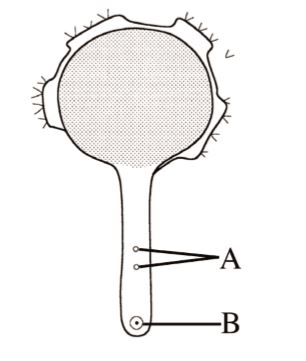
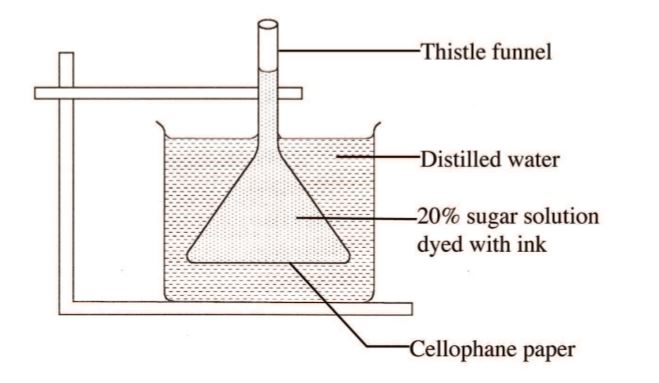

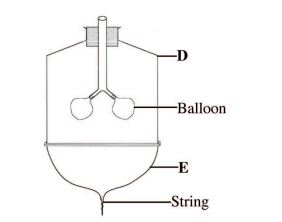

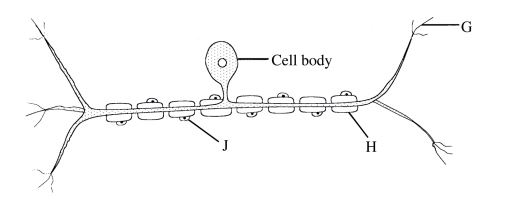
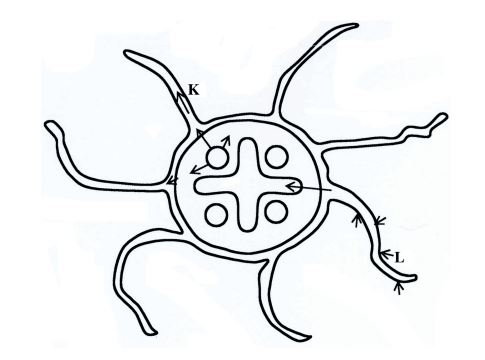
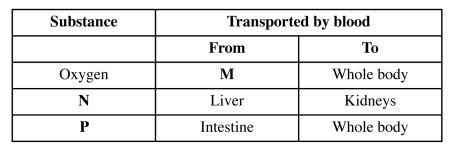

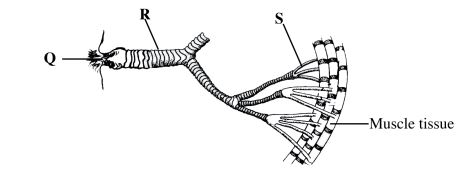
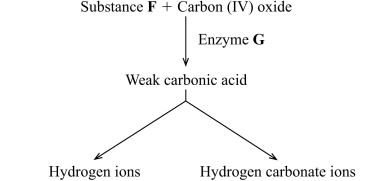
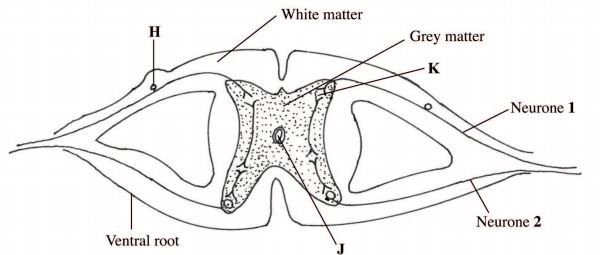


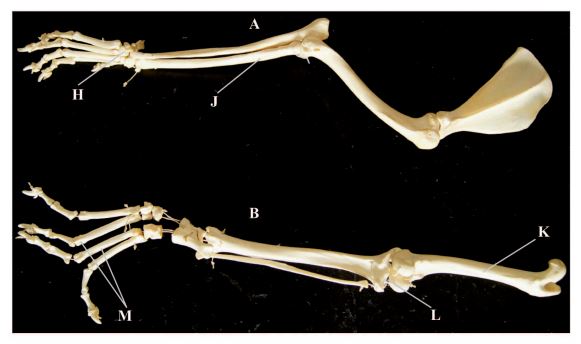
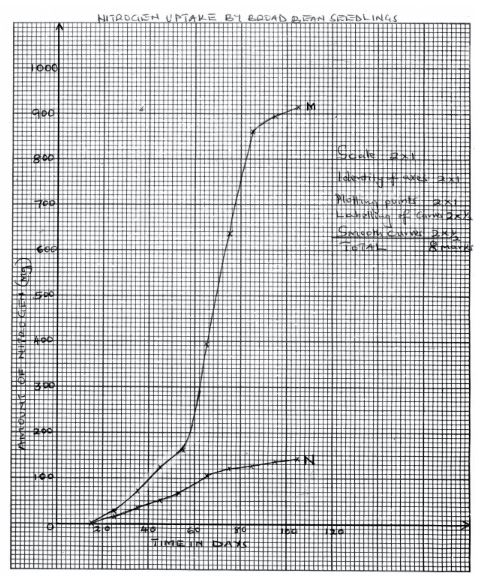
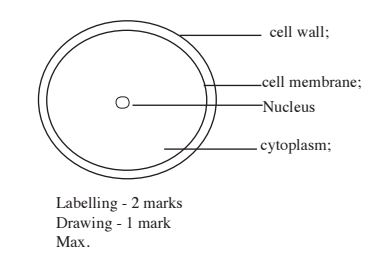
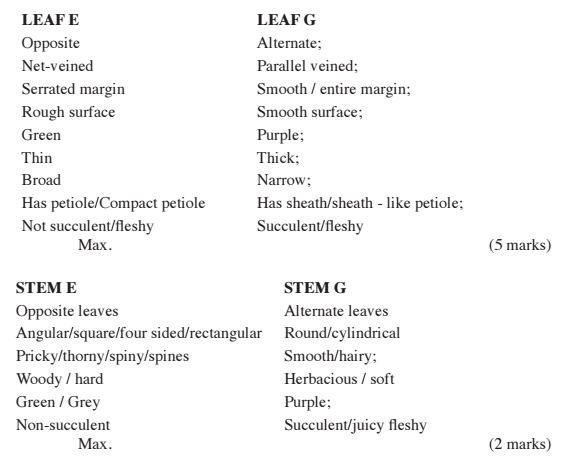
Comments
Post a Comment